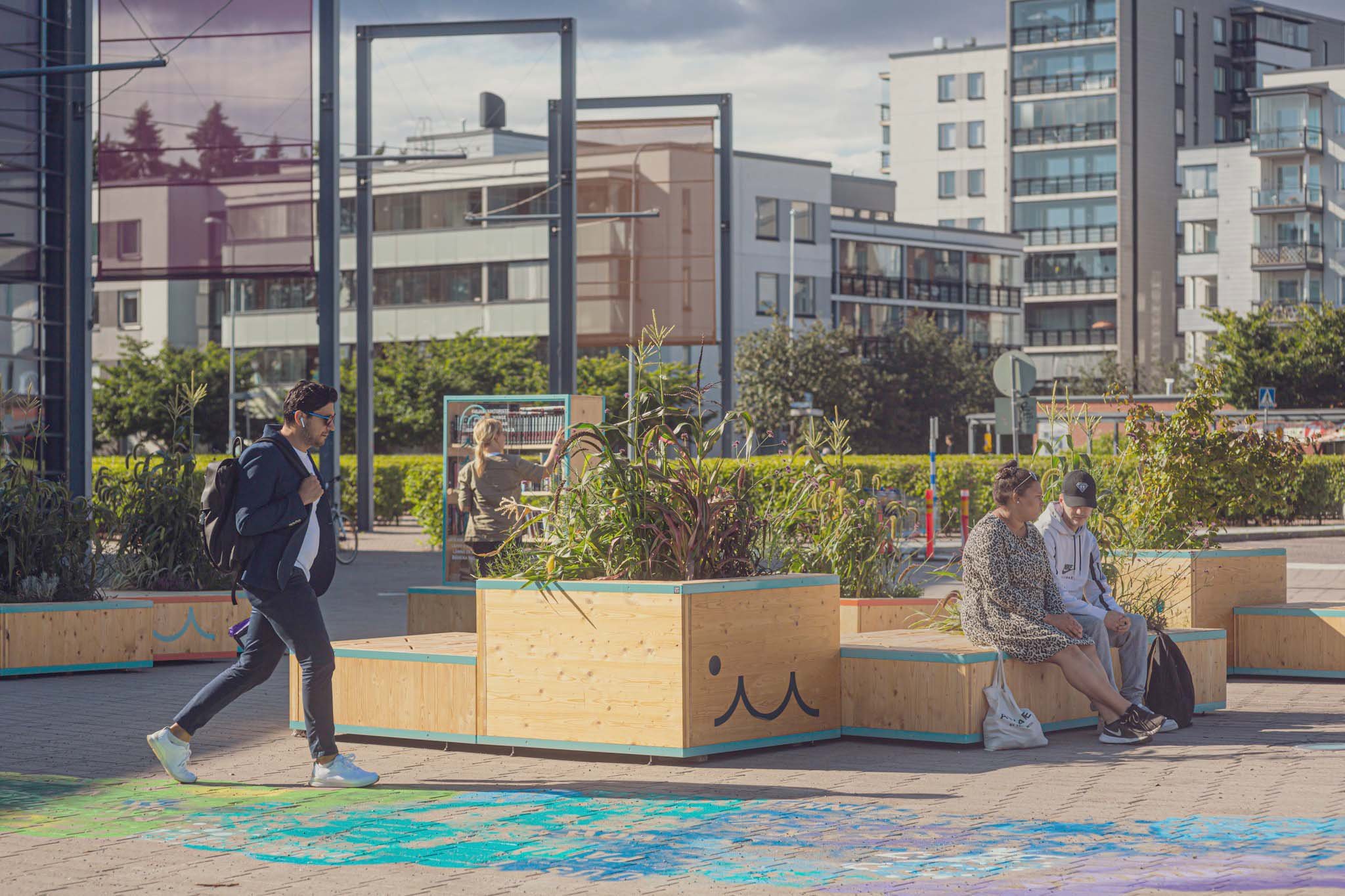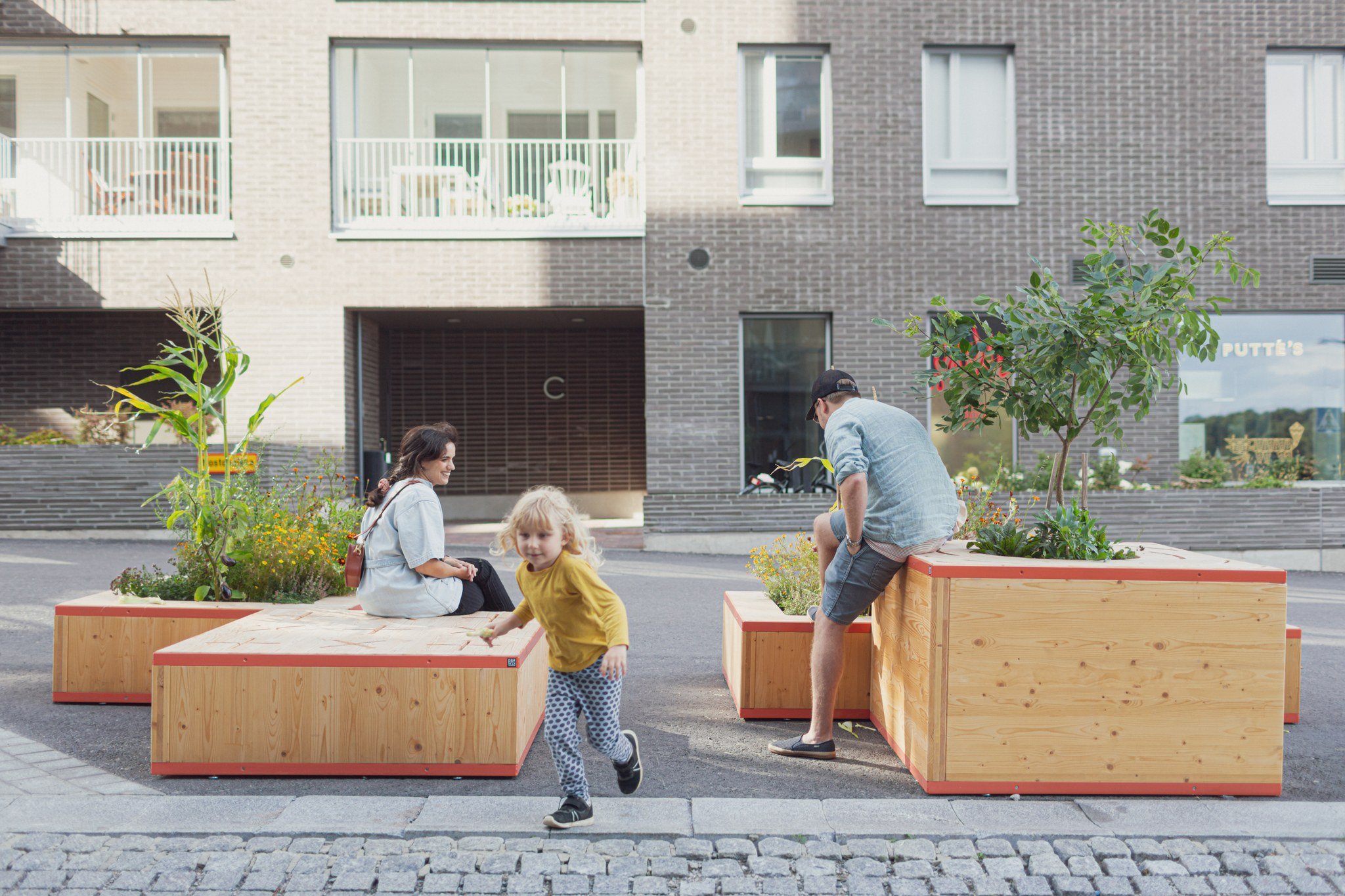More connectedness
(EN) Guest blog from Päivi Raivio: urban designer, placemaker and co-founder Parkly
More connectedness – why bring your work outdoors?
Where is the nearest green spot in the city suitable for working outdoors or inviting your colleague to an outdoor meeting? The prospect of finding such a spot very close to your office or home is ideal – a true example of a 1-minute city where the elements of good urban life are always close at hand. Just the other day I marveled at the photos of London’s Barbican (one of my favorite urban places!) that a friend had posted on Instagram. Even in the midst of the high-rise concrete brutalism, green (and blue) spaces are accessible and very visible. One of the biggest cities in the world, one the most urban settings – yet a lot of greenery to step outside to work, play and stay in. If Barbican can do it, so can other urban areas too.
Our mission at Parkly is to advance the idea of the 1-minute city by building pockets of urban green in all kinds of urban spaces: new districts, old neighborhoods, business parks, campus areas, streets – and more. Our collaborative projects extract a lot of information from citizens and there is a strong signal to us city makers, planners and designers: citizens wish to have a lot more plants and trees in the places they live, move and work in. These interventions pave the way not only towards a more liveable city, but to everyday life in which it is easy to step outside to work or meet others.
The good news is that we truly can re-choreograph our cities by adding elements to the urban space that encourage people to use their cities differently: by changing the environment, we can change our habits. We might be used to a street as a mere passage for getting from a to b, but when we find inviting stopovers along the way, it encourages us to spontaneously linger, stay, and meet others. This applies to work life too: what kind of new spaces could change our habits and routines? Along with comfortable outdoor spaces, we should rethink what efficiency means: pausing increases creativity and access to green fosters happiness at work.
I have been working on placemaking methods in order to create platforms for exchange in campus areas and office parks. social life in such areas needs to be revived after the long and tedious remote work period during the pandemic. This can also be a good reason to come back to the office and an opportunity to adopt new habits, such as outdoor work.
We have several Parkly projects in work and study environments and the findings are encouraging: outdoor places are actively used for work and spontaneous meetings. Maria 01 startup campus in Helsinki offers an outdoor office surrounded with an urban garden. We have just set up a pocket park in Groningen in Martini Business Park to develop the outdoor spaces into more welcoming and green in a project led by Bureau Buitendienst.
photo: Bureau Buitendienst
We are also soon setting up a pocket park at the Aalto University campus: in an open survey, students proposed dozens of different places for the intervention, which is a signal that such easily accessible hangout places are much needed in campus areas. Outdoor work is one potential way to bring life to public places – which is at the core of what we do as urban designers and placemakers. The Outdoor Office day initiative highlights the new ways we can rethink work and workplaces and we are very happy to invite our collaborators on this shared mission too by encouraging people from our projects to ideate, debate, have a coffee (it tastes better outdoors!), make some calls with birds twittering in the background… and more. Connecting with nature while at work might be a grounding experience: after all, it is the real world we need to be regularly connected to in order to understand that our work has an impact on it.
Outdoor work is one potential way to bring life to public places – which is at the core of what we do as urban designers and placemakers. The Outdoor Office day initiative highlights the new ways we can rethink work and workplaces and we are very happy to invite our collaborators on this shared mission too by encouraging people from our projects to ideate, debate, have a coffee (it tastes better outdoors!), make some calls with birds twittering in the background… and more. Connecting with nature while at work might be a grounding experience: after all, it is the real world we need to be regularly connected to in order to understand that our work has an impact on it.
Credit images: Parkly




